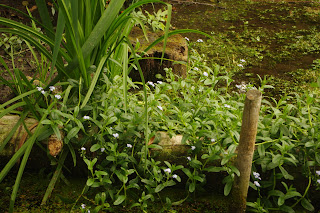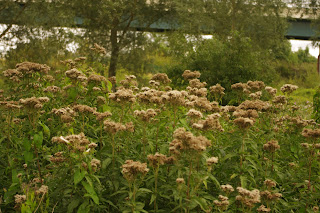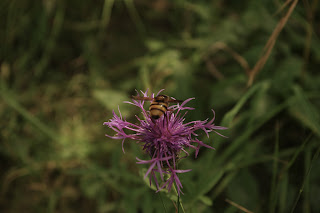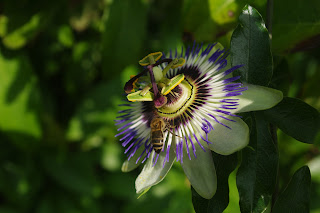Continuing the theme of watery wildflowers I took a short walk through the Purwell Ninesprings nature reserve in Hertfordshire. The river Purwell rises out of chalk bedrock in nearby St. Ippolyts and the reserve is in effect a floodplain of the river. It begins with an area of wet woodland which is currently as dry underfoot as I've ever known it.
The woodlands give way to an area of marshy reed beds. Here too the ground is firm whereas it is usually pretty boggy even in summer.
Purwell Ninesprings is noted for wetland species. For example Meadowsweet (Filipendula ulmaria) is flowering nicely so there must be sufficient moisture below ground. In fact plants that like damp conditions are often well adapted to drought because their habitats inevitably dry out from time to time.
Beyond the reeds the river wends through a stretch of wet meadow and scrub which needless to say is pretty parched. This part of the reserve is grazed by cattle. Inevitably there was a plan to build houses on it back in the seventies which was resisted. Purwell Ninesprings became hemmed in by the post-war expansion of Hitchin but has survived as a much appreciated amenity.
As I've noted in several recent entries the margins of streams and rivers are a good bet for spotting wildflowers in late summer, especially in a drought year. Here is Water Forget-me-not (Myosotis scorpioides) mingling with a Willowherb (Epilobium hirsutum or E. parviflorum).






























